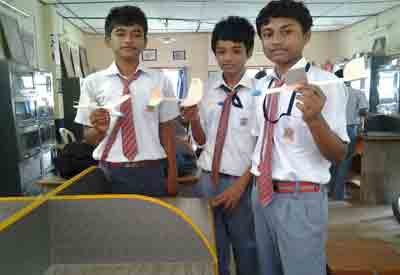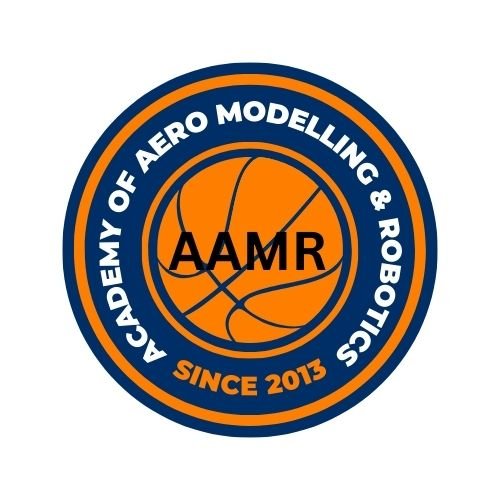Aeromodelling for Kids! Is it possible for kids to learn Aeromodelling?
Of course. In the captivating world of hobbies and extracurricular activities, aeromodelling stands out as an exhilarating endeavor that combines learning, creativity, and hands-on experience.
In other words, Aeromodelling, which involves designing, building, and flying miniature aircraft, can be an incredibly rewarding pursuit for kids.
In this article, we delve into the diverse array of benefits, pros, and cons that come with introducing children to the captivating world of aeromodelling.

Glider-Making Workshop:
- Introduction to Aeromodelling
- Theory of Flight
- Chuck Glider Construction and Flying
- Competition with a Prize
- AAMR Membership
- Aeromodelling Booklet
- Certificate of Achievement
Join Today

Workshop: Rubber Power Airplane:
- Introduction to Aeromodelling
- Theory of Flight
- Rubber-Powered Model Airplane Construction and Flying
- Competition with a Cash Prize
- AAMR Membership
- Aeromodelling Booklet
- Certificate of Achievement
Join Today!
Benefits of Aeromodelling for Kids
- Cognitive Development: Aeromodelling nurtures a child’s cognitive abilities by engaging them in critical thinking and problem-solving. From designing the aircraft to adjusting its flight path, kids learn to analyze variables and make adjustments, enhancing their logical reasoning skills.
- Hands-on Learning: The tactile nature of aeromodelling offers a hands-on learning experience that textbooks can’t replicate. Kids get to apply principles of physics and engineering as they assemble and fine-tune their aircraft, translating theoretical knowledge into practical skills.
- Creativity and Innovation: Designing and customizing model airplanes encourages creativity and innovation. Kids have the freedom to experiment with different materials, shapes, and configurations, fostering their imaginative thinking and pushing the boundaries of their creativity.
- Patience and Perseverance: Building a model aircraft requires patience and attention to detail. Kids learn that achieving success often involves multiple attempts and the willingness to learn from failures, promoting perseverance and a growth mindset.
- Introduction to STEM Concepts: Aeromodelling serves as a gateway to science, technology, engineering, and mathematics (STEM) disciplines. Through practical application, kids gain a better understanding of aerodynamics, structural engineering, and the physics of flight.
Aeromodelling Workshops for Kids:
Pros of Aeromodelling for Kids
| 1. Skill Diversification | However, Engaging in aeromodelling exposes children to a variety of skills, from craftsmanship and engineering to aerodynamics and piloting. This diverse skill set can prove valuable in future academic and career pursuits. |
| 2. Bonding Opportunities | In other words, Aeromodelling can become a family affair, creating opportunities for parents and kids to bond over a shared interest. Collaborative projects strengthen family ties and provide a platform for quality time spent together. |
| 3. Real-world Applications | In fact, the skills acquired through aeromodelling can extend beyond the hobby itself. As kids delve into the intricacies of flight mechanics, they might discover a passion for aviation, aerospace engineering, or other related fields. |
| 4. Confidence Boost | Accomplishing the construction and successful flight of a model aircraft instills a sense of accomplishment and boosts a child’s self-confidence. Overcoming challenges in aeromodelling can translate into improved self-esteem in various aspects of life. |
| 5. Future Opportunities | A strong foundation in aeromodelling can lead to exciting opportunities in the future. From participating in competitions to pursuing advanced studies in engineering, kids who develop a passion for aeromodelling open doors to a world of possibilities. |
Cons of Aeromodelling for Kids
| 1. Financial Investment | Outdoor aeromodelling is weather-dependent. Unfavorable weather conditions, such as strong winds or rain, can limit the opportunities for kids to enjoy their hobbies. |
| 2. Safety Considerations | As with any hobby involving flying objects, safety is paramount. Kids need proper guidance and supervision to ensure they handle the aircraft and related equipment safely, minimizing the risk of accidents. |
| 3. Frustration with Complexity | The intricate nature of aeromodelling can sometimes lead to frustration, especially for beginners. The process of assembling, adjusting, and flying the aircraft might pose challenges that could potentially deter some kids. |
| 4. Time Commitment | Aeromodelling demands time and patience. Kids need to invest time in learning the craft, designing, constructing, and refining their aircraft. This might conflict with other activities or commitments. |
| 5. Weather Dependency | Outdoor aeromodelling is weather-dependent. Unfavorable weather conditions, such as strong winds or rain, can limit the opportunities for kids to enjoy their hobby. |
Conclusion
To summarize, Aeromodelling for kids is a multifaceted pursuit that blends education, skill-building, and fun. As children engage with the intricacies of flight, they embark on a journey of learning, creativity, and personal growth.
While there are considerations to keep in mind, such as the initial investment and safety precautions, the benefits and opportunities far outweigh the potential drawbacks. Through aeromodelling, kids can soar to new heights of knowledge, skill, and confidence.
Aeromodelling for Kids: FAQs
Why should kids join aeromodelling?
Every child should join Aeromodelling as it offers a unique blend of hands-on learning, cognitive development, and creativity. By participating in this hobby, kids can gain practical skills, enhance their problem-solving abilities, and foster their creative thinking, all while having a blast building and flying model aircraft.
How does aeromodelling for kids contribute to cognitive development?
Again, Aeromodelling engages kids in critical thinking, as they design and adjust aircraft for optimal flight. Analyzing variables, making adjustments, and troubleshooting challenges during the building and flying processes sharpens their logical reasoning and enhances their cognitive abilities.
Can aeromodelling for kids improve a child’s STEM understanding?
Absolutely. Aeromodelling introduces kids to the principles of science, technology, engineering, and mathematics (STEM) in an exciting and tangible way. They learn about aerodynamics, mechanics, and physics through hands-on experiences, laying a strong foundation for future academic pursuits.
How does aeromodelling enhance creativity?
Designing and customizing model airplanes provides an outlet for kids to express their creativity. From choosing materials to shaping the aircraft’s form, aeromodelling encourages them to think outside the box and come up with innovative solutions.
What life skills can kids develop through aeromodelling?
However, Aeromodelling instills patience, perseverance, and attention to detail. Kids learn to embrace failure as a stepping stone to success and to invest time and effort into achieving their goals. These skills are valuable in various aspects of life.
Are there any real-world applications of aeromodelling skills?
Absolutely. The skills acquired in aeromodelling can extend to fields like aerospace engineering, aviation, and robotics. This hobby can ignite a lifelong passion and even shape career choices in related industries.
How can aeromodelling boost a child’s confidence?
In fact, Successfully building and flying a model aircraft fosters a sense of accomplishment and self-assurance. Overcoming challenges and witnessing the results of their efforts boosts a child’s self-esteem and confidence.
Is aeromodelling a family-friendly activity?
Yes, it is. Aeromodelling can bring families together as parents and kids collaborate on projects. It provides quality bonding time, encourages teamwork, and allows family members to share their passion for aviation and engineering.
What are the potential career paths for kids interested in aeromodelling?
Again, Kids who develop a passion for aeromodelling can explore careers in aerospace engineering, aviation, research and development, and even entrepreneurship. This hobby nurtures skills that are highly relevant in these fields.
How does aeromodelling contribute to a child’s overall growth?
Yes, Aeromodelling contributes to holistic growth by fostering intellectual, emotional, and social development. The combination of learning, innovation, and personal achievement makes it an invaluable activity for kids seeking well-rounded growth.
Engaging in aeromodelling offers kids a unique platform to explore their potential, develop critical skills, and cultivate a lifelong passion for aviation and engineering. The benefits extend beyond the hobby itself, shaping them into confident, creative, and capable individuals.

